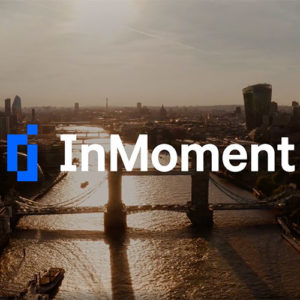Author: Stacy Bolger, Vice President, Global Employee Experience
Experience Improvement (XI) initiatives, when done correctly, are constantly evolving. You design your program with quantifiable ROI goals in mind, run it for a given length of time, and reunite with stakeholders to see how it did. If you’re wondering what comes next with your initiative, want some help with optimizing program investment, or are thinking of expanding your program to new stakeholders and business areas, there’s always a good place to start when it comes to that and more: journey mapping.
What Exactly Is Journey Mapping?
Journey mapping is key to every experience initiative, especially those that are designed to drive real customer experience (CX) and employee experience (EX) improvement. Customer experience, employee experience, and employees’ perspective of customer experience are all interrelated—journey mapping allows us to understand those relationships from both audiences’ viewpoints. If you don’t have a line of sight on those relationships, defining challenges and what your experience program can do to solve them becomes much more difficult.
Journey mapping allows brands to understand customer and employee relationships from both audiences’ viewpoints.
None of this is to say that journey mapping is simple. Over the many years I’ve spent consulting on this topic, I’ve seen the organizations I talk to contend with problems like a lack of executive sponsorship, siloed work culture, lack of resources, and confusion on overall company priorities/vision. Fortunately, there’s a two-stage blueprint that brands can use to navigate these obstacles, and it begins with strategy.
Step #1: Business Strategy and Alignment
The first step toward building a better customer or employee journey is to reevaluate your company’s business strategy and organizational alignment. What business goals do these journeys build toward? Which customer or employee segments do you need in order to reach those goals, and what do you already know about them? Figure out which customers and/or employees you’re mapping for, and you’ll have figured out the beginning of this process.
Next, consider who your stakeholders are if you haven’t already, and how well they’re aligned around a common goal. If you’re not sure on either of those questions, you can begin solving that problem by desiloing data within your wider organization. Sharing data isn’t ‘just’ great for making sure everyone in your company has the same profile of the customer or the employee; it allows you to build up your internal network of CX advocates and, in turn, find the stakeholders you need to successfully journey-map.
Step #2: Finding Resources
You’ve identified the journeys you need to map and the stakeholders/advocates who can help you pull it off—now it’s time to talk resources. You can have all the right people in place and know which journeys to assess, but if you don’t have the re.sources you need to act on what you find, then there’s not much point to this entire endeavor. Data can be useful for creating a holistic view of the people whose journeys you’re mapping, but transformative experience success only comes about as a result of direct action.
In this context, “resources” doesn’t just refer to money (although that’s nice to have for your project too). I’m also talking about the human element; do your teammates have the analytical, project management, and strategic thinking skills needed to map your journeys? Additional factors to consider with journey mapping specifically include:
- Quantifying financial impact
- Ensuring improvements gleaned from mapping are scalable
- Measuring and monitoring changes implemented during and after journey mapping
- Addressing change management
Knowing Is Half the Battle
If you and your team can successfully evaluate your business strategy, gather stakeholders, marshall resources, and account for the obstacles I mentioned earlier, you’ll have already won much of the journey-mapping battle. True, all of that is much easier said than done, but accomplishing those goals both simplifies the rest of this process and makes it scalable.
Once you know which moments matter most to your customers and employees, you can delve deeper, gather feedback unique to each journey touchpoint, identify Experience Improvement opportunities, and understand how these journeys relate to each other. Then, using the desiloed infrastructure you put into place to initially reach this point, you can bring those learnings back to your wider organization and figure out how to meaningfully improve every experience! As an example, a journey map I once helped build for a client revealed that employees hadn’t been trained to deliver on an expected standard of service. Journey mapping identified a chance for that client to meaningfully improve an experience for both customers and employees.
Creating Experience Improvement
If journey mapping helps brands and organizations create Experience Improvement, then why do so many companies’ programs fail to move the needle? Creating meaningful improvement hinges on taking action—a lot of companies and even experience program vendors are content to build a journey map and then either scoreboard-watch or only react to problems as they arise. If you want to make a difference for the customers and employees for whom you’re mapping, this passivity won’t cut it.
If you think a journey mapping initiative is too expensive or time-consuming, consider the opportunity cost. Journey mapping creates initiatives that involve both people and their ideas, resulting in much more impassioned, connective experiences than initiatives that just tell people how they should change.
Mapping customer journeys, feeding intel into a platform that can furnish actionable intelligence, and working with the teams you gathered to journey-map is what makes this process not just worthwhile, but invaluable. Journey mapping’s collaborative, evaluative nature is what makes it a great way to optimize program investment to drive ROI, reevaluate your initiative ahead of its next cycle, and identify the behavior changes that are needed to improve customer and employee experiences.
You can download a PDF of this article by selecting the button below!



